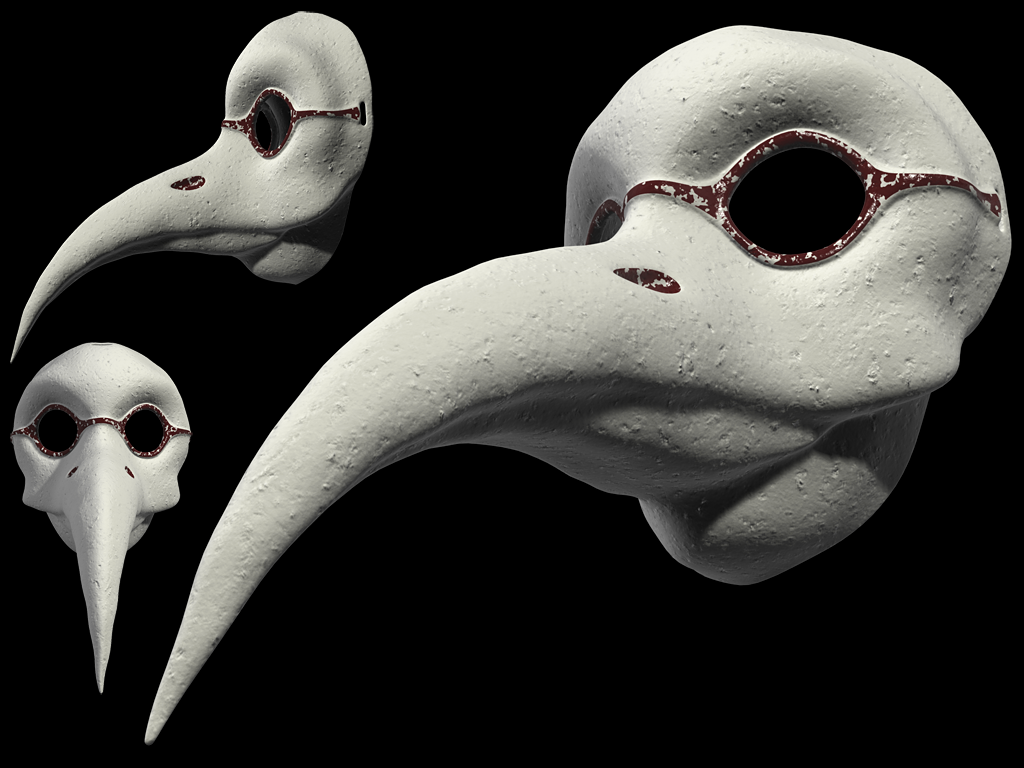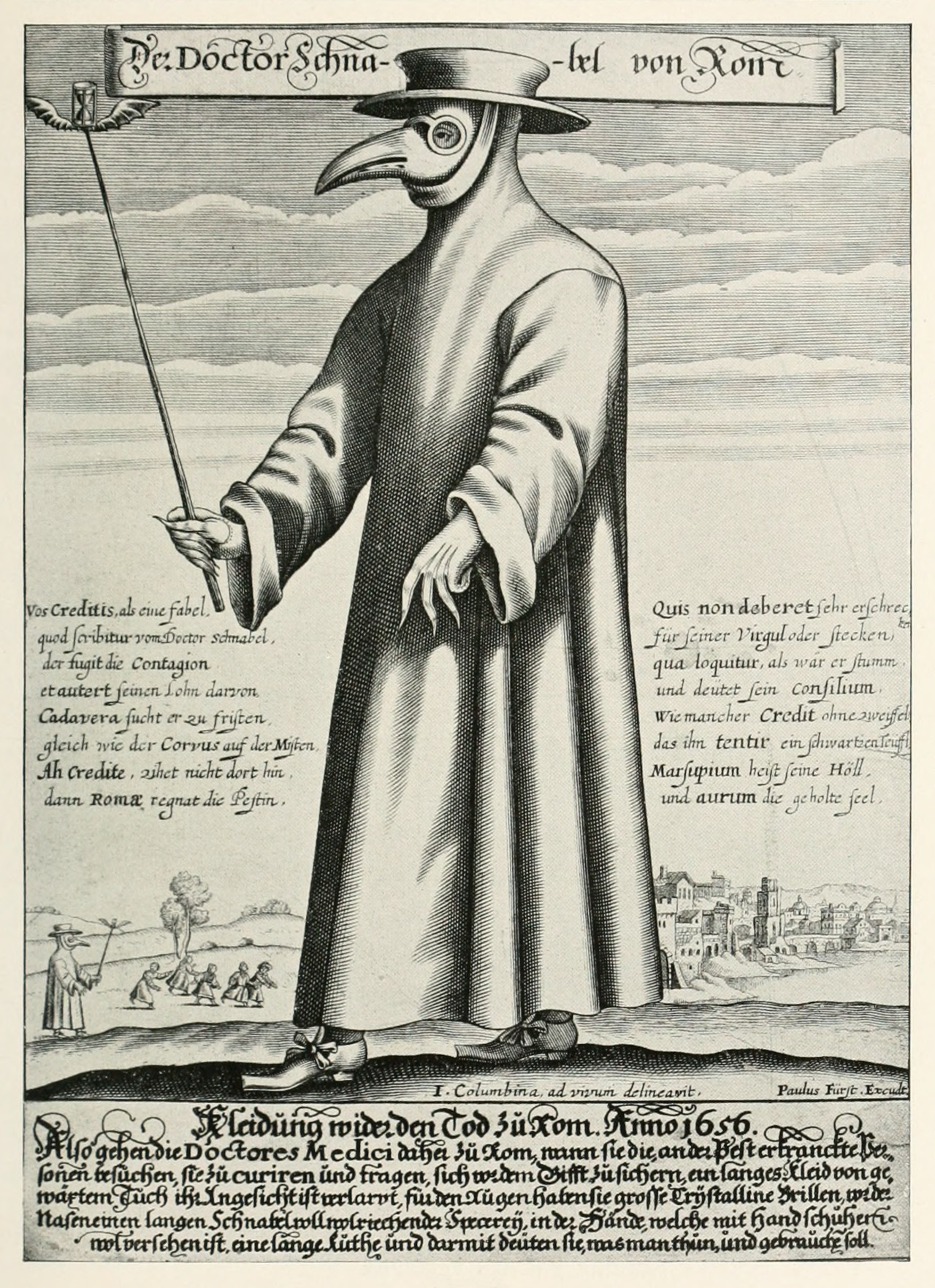I've seen the mask in the picture below is very popular among photosets of Goth or Steampunk models, but does any of you know its origin and why it has a beak? In this post you will find information about the macabre story behind these masks!

The beak shaped mask was worn by plague doctors. They were special medical physicians who treated those who had the plague. They were specifically hired by towns that had many plague victims in times of plague epidemics. Since the city was paying their salary, they treated everyone: both the rich and the poor. They were not normally professionally trained experienced physicians or surgeons, and often were second-rate doctors not able to otherwise run a successful medical business or young physicians trying to establish themselves.
Plague doctors by their covenant treated plague patients and were known as municipal or "community plague doctors", whereas "general practitioners" were separate doctors and both might be in the same European city or town at the same time. In France and the Netherlands plague doctors often lacked medical training and were referred to as "empirics". In one case a plague doctor had been a fruit salesman before his employment as a physician.

Plague doctors served as public servants during times of epidemics starting with the Black Death of Europe in the fourteenth century. Their principal task, besides taking care of plague victims, was to record in public records the deaths due to the plague.
In certain European cities like Florence and Perugia plague doctors were requested to do autopsies to help determine the cause of death and how the plague played a role. Plague doctors became testators and witnesses to numerous wills during times of plague epidemics. Plague doctors also gave advice to their patients about their conduct before death. This advice varied depending on the patient, and after the Middle Ages the nature of the relationship between doctor and patient was governed by an increasingly complex ethical code.

Plague doctors practiced bloodletting and other remedies such as putting frogs or leeches on the buboes to "rebalance the humors" as a normal routine. Plague doctors could not generally interact with the general public because of the nature of their business and the possibility of spreading the disease; they could also be subject to quarantine.
A famous plague doctor who gave medical advice about preventive measures which could be taken against the plague was Nostradamus. Nostradamus' advice was the removal of infected corpses, getting fresh air, drinking clean water, and drinking a juice preparation of rose hips.
The plague doctor's costume was the clothing worn by a plague doctor to protect him from airborne diseases. The costume consisted of an ankle length overcoat and a bird-like beak mask often filled with sweet or strong smelling substances (commonly lavender), along with gloves, boots, a brim hat and an outer over-clothing garment.

The mask had glass openings for the eyes and a curved beak shaped like that of a bird. Straps held the beak in front of the doctor's nose. The mask had two small nose holes and was a type of respirator which contained aromatic items. The beak could hold dried flowers (including roses and carnations), herbs (including mint), spices, camphor or a vinegar sponge. The purpose of the mask was to keep away bad smells, which were thought to be the principal cause of the disease in the miasma theory of infection, before it was disproved by germ theory. Doctors believed the herbs would counter the "evil" smells of the plague and prevent them from becoming infected.
The beak doctor costume worn by plague doctors had a wide brimmed leather hood to indicate their profession. They used wooden canes to point out areas needing attention and to examine patients without touching them. The canes were also used to keep people away, to remove clothing from plague victims without having to touch them, and to take a patient's pulse.
Some modern writers have described fourteenth-century plague doctors as wearing bird-like masks. However, medical historians have attributed the invention of the "beak doctor" costume to Charles de Lorme, who adopted in 1619 the idea of a full head-to-toe protective garment, modeled after a soldier's armour. This consisted of a bird-like mask, and a long leather (Moroccan or Levantine) or waxed-canvas gown which was from the neck to the ankle. The over-clothing garment, as well as leggings, gloves, boots, and a hat, were made of waxed leather. The garment was impregnated with similar fragrant items as the beak mask.
























No comments:
Post a Comment